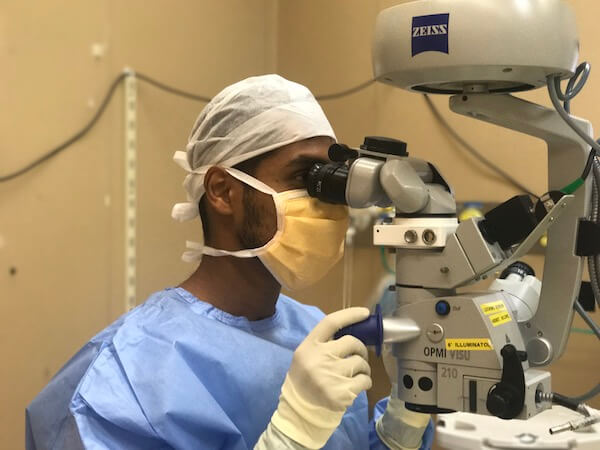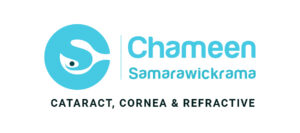
Originally posted on the Nexus Eye Care website, the latest interview with Prof. Chameen Samarawickrama explores ‘What is CAIRS?’ — a groundbreaking approach to treating keratoconus.
At Nexus Eyecare, we’re committed to bringing the latest advancements in ophthalmology to our patients. One such innovation is CAIRS – Corneal Allogenic Intrastromal Ring Segments – a promising development in the management of keratoconus. We sat down with our own Prof. Chameen Samarawickrama, an experienced corneal surgeon, to help demystify this technique and explain how it’s changing the landscape of corneal care.
Q: What is CAIRS?
Prof. Samarawickrama: CAIRS stands for Corneal Allogenic Intrastromal Ring Segments. It’s an innovative approach where we use donor corneal tissue instead of synthetic material to reshape the cornea, particularly in patients with keratoconus. Unlike synthetic intrastromal rings like INTACS, CAIRS uses natural corneal tissue, which integrates better with the host tissue and can reduce the risk of complications like extrusion or infection.
Q: Who is the ideal candidate for CAIRS?
Prof. Samarawickrama: CAIRS is ideal for patients with keratoconus who are no longer achieving satisfactory vision correction with glasses or contact lenses. It can also be performed with the goal of avoiding or delaying a corneal transplant—especially in patients with moderate to advanced keratoconus, but who still have enough healthy corneal tissue to respond to less invasive treatment.
Q:Why is CAIRS gaining popularity in corneal surgery circles?
Prof. Samarawickrama: There are several reasons. First, because CAIRS uses donor corneal tissue, it tends to be more biocompatible, reducing long-term risks. Second, the visual outcomes can be impressive – many patients experience significant improvement in both uncorrected and best-corrected vision. Thirdly, it is reversible. If the patient isn’t happy with the vision, or there are any unexpected complications, the CAIRS segment can be removed and the host cornea returns to its original shape. Lastly, it fills a critical gap between conservative management and full corneal transplantation.
Q: What is the recovery process like for patients undergoing CAIRS?
Prof. Samarawickrama:Recovery is relatively smooth. Patients typically notice improved vision almost straight away, but it does fluctuate over the first 3 months or so. As with any corneal procedure, we monitor closely for healing and vision outcomes.
Q:Where does CAIRS fit in the broader treatment journey for keratoconus?
Prof. Samarawickrama: Think of CAIRS as a middle ground. It’s a step between non-invasive treatments like glasses, contact lenses, and cross-linking, and more invasive ones like corneal transplants. For the right patient, it can delay or even eliminate the need for a transplant, which is a huge win.
Q: What does CAIRS mean for the future of keratoconus care?
Prof. Samarawickrama: CAIRS is a significant step forward in how we manage keratoconus. It bridges the gap between conservative treatments and corneal transplantation, offering patients a natural, less invasive solution that can preserve their vision and quality of life for longer. At Nexus Eyecare, we’re excited to offer it as part of our suite of advanced treatments.
If you or a loved one has keratoconus and are exploring treatment options, CAIRS may be a viable alternative. To learn more or book a consultation with Prof. Samarawickrama, contact us at Nexus Eyecare today.

Thank you a lot for providing individuals with an exceptionally marvellous possiblity to read in detail from this website. It’s always so pleasing plus full of fun for me and my office mates to visit your blog no less than 3 times in 7 days to see the newest tips you will have. And indeed, I am usually fulfilled considering the brilliant tactics you give. Certain 3 ideas in this posting are completely the simplest we have ever had.